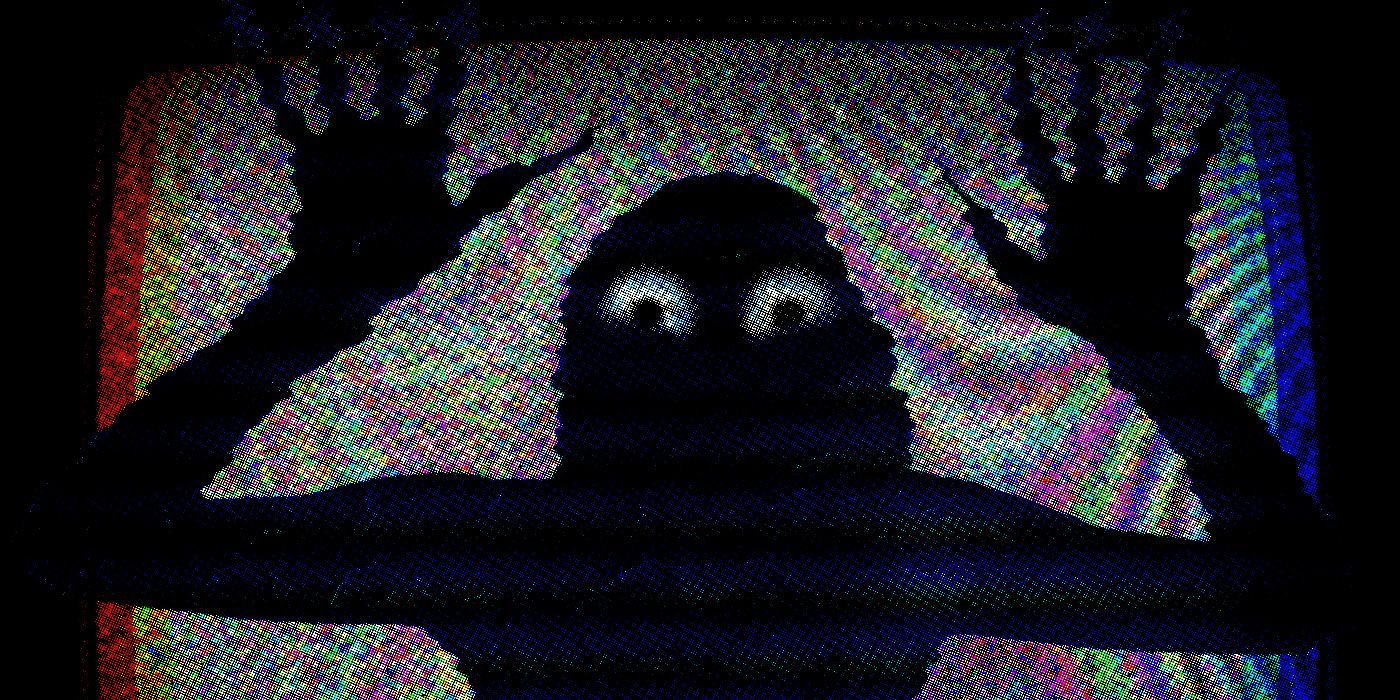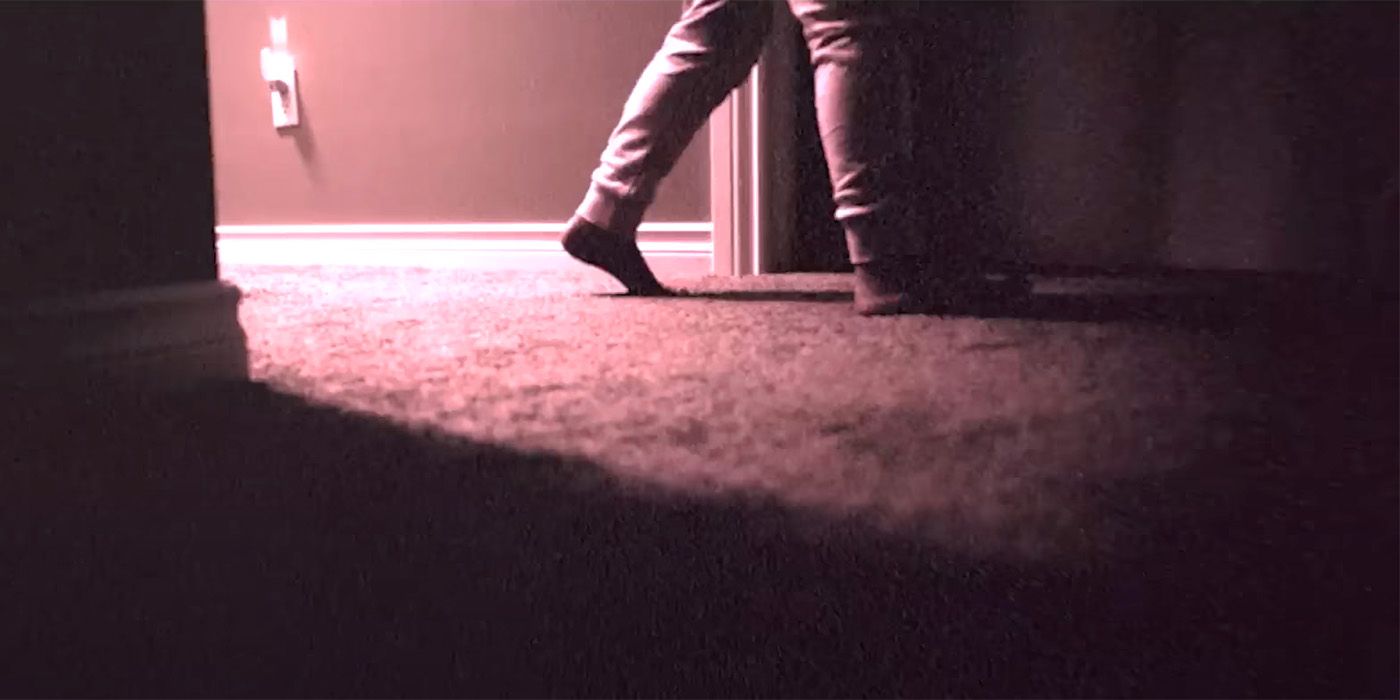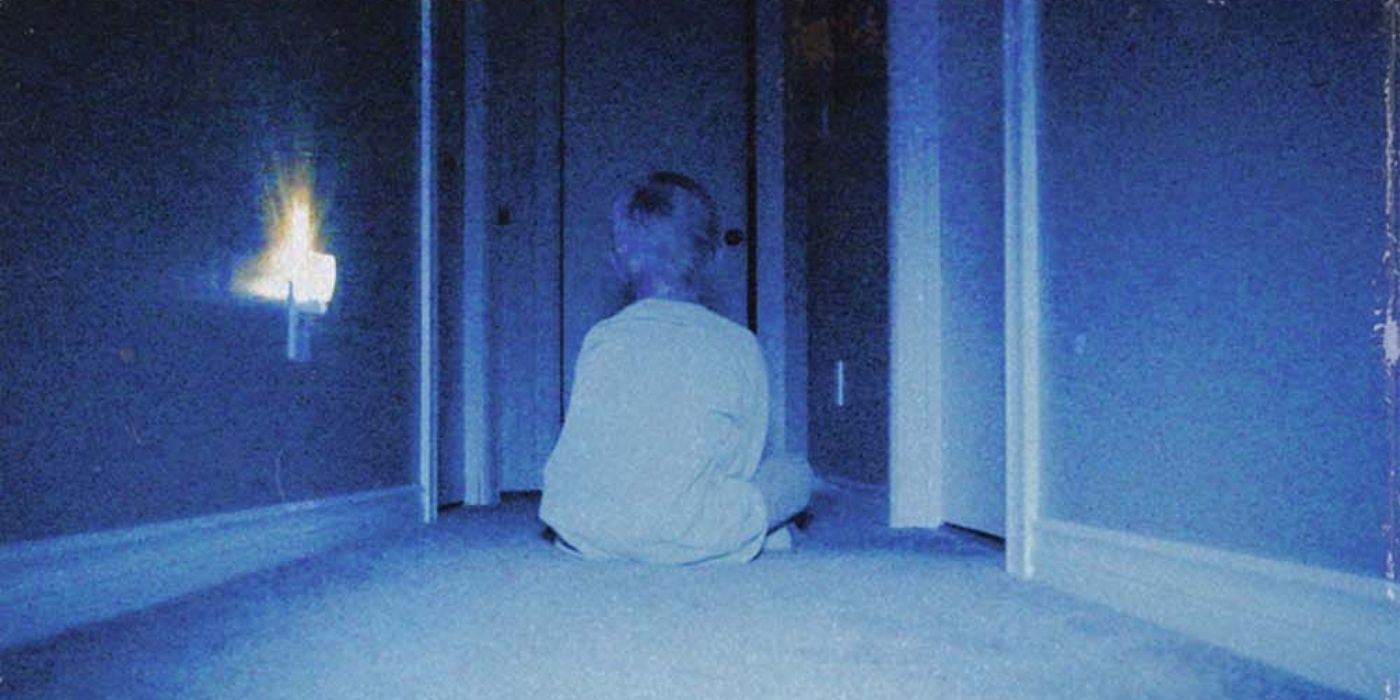Skinamarink is playing in theaters across America, a fact that should be celebrated in and of itself. In a post-pandemic cinema landscape littered with franchises, spinoffs, and legacy sequels, true originality is something to be treasured. And while horror has proven to be one of the few ways original properties can turn a tidy profit (Smile, M3GAN, etc.), Skinamarink stands alone: following two children trapped in their house by supernatural forces, its eerie, elliptical narrative and experimental presentation make the average “elevated horror” slow-burn look like Terrifier. There simply isn’t anything else like it in theaters right now.
Of course, “in theaters right now” is the operative part of that sentence. In an interview with Fangoria, director Kyle Edward Ball shouted out a few of his influences: David Lynch, Stanley Kubrick, experimentalists like Stan Brakhage and Maya Deren, slow cinema scions like Chantal Akerman and Andrei Tarkovsky. But curious viewers from TikTok, who may not be in tune with avant-garde cinema, will have their own point of reference: it may not have influenced Ball, but it may very well have contributed to Skinamarink’s viral popularity. I’m talking, of course, about analog horror.
We Interrupt This Broadcast
In his book A Year of Swollen Appendices, the legendary musician and producer Brian Eno mused on the nature of obsolete media. “Whatever you now find weird, ugly, uncomfortable and nasty about a new medium will surely become its signature. CD distortion, the jitteriness of digital video, the crap sound of 8-bit - all of these will be cherished and emulated as soon as they can be avoided.” So it goes with analog horror, which mines the media of the late 20th century - warped VHS tapes, crackly radio stations, cheap public access television - for dread and terror. It traffics in the uncanniness of grainy camcorder footage, the canned sound of background music on the Weather Channel, the piercing buzz and stark warnings of an emergency broadcast. It’s a little like what would happen if you fed vaporwave after midnight.
The conventions of analog horror were codified, and arguably perfected, by Kris Straub’s Local58. Posing as a local television station, Local58 consists of various broadcasts that are inevitably hijacked by…well, something else. It may show dashcam footage of a GPS leading its driver to his doom in a dark forest. It may show a “contingency plan” from the Cold War, where the American population is ordered to commit mass suicide to avoid some terrible fate. It may show an emergency broadcast warning viewers “DO NOT LOOK AT THE MOON” - until the message shifts, and something begins to coax viewers to do just that as the world descends into chaos around them. These videos do not have characters, and any spoken dialogue is automated; this, combined with the grainy VHS quality and general attention to detail, lends it all an eerie sense of immersion that most found footage horror can never quite achieve.
Skinamarink’s Lo-Fi Terror
While Skinamarink deviates from analog horror in some key ways (which we’ll get to in a moment), many of the genre’s hallmarks are there, most obviously in Jamie McRae’s cinematography. It’s not technically analog - the film was shot digitally - but in the camera’s grainy texture and the muted bluish glow of a suburban household after midnight, Ball and McRae find the eerie, liminal core of analog horror. To quote MST3K, every frame of this movie looks like it could be someone’s last known photograph - or at least, it would if we ever got a good look at the character’s faces.
Speaking of which, ambiguity and suspense are a couple other things Skinamarink has in common with analog horror. Analog horror creators understand that what isn’t shown is often just as scary as what is shown - and in any case, much less expensive. It’s a genre that favors suggestion, cryptic imagery, things that may not make logical sense but sure as hell make sense at three in the morning when you haven’t slept a wink.
Just as Local58 never fully explains what’s going on with the moon, Skinamarink never provides straight answers. What’s getting rid of the house’s doors and windows? What is that distorted voice giving orders to young Kevin and Kaylee? Does it have something to do with their dad? Their mom? Is this a dream? A coma? Life after death? Careful viewers, or at least those with a good imagination, can craft their own theories. But the true source of terror isn’t what’s happening: it’s how it’s happening, unfolding in shot after long, static shot, floating toys and garbled cartoons building to a profoundly distressing climax. It doesn’t just make you feel scared; it makes you feel helpless.
How Does Skinamarink Differ?
To understand why Skinamarink may offer a path forward for analog horror to enter the mainstream, it’s worth looking at what it doesn’t have in common with the genre. The most popular examples of analog horror aside from Local58 - Gemini Home Entertainment, The Mandela Catalogue, The Monument Mythos - have increasingly elaborate backstories and mythologies, usually parceled out one cryptic piece at a time. While that can definitely be intriguing in a “Charlie Kelly standing in front of a corkboard” kind of way - especially with The Monument Mythos - it runs the risk of reducing a whole genre down to a vague trail of breadcrumbs, not unlike the fate that befell Slender Man. In addition, while the limitations of a genre can be creatively liberating, it’s also possible for patterns to develop and turn to cliché: there are, it turns out, only so many ways you can futz with an emergency weather alert.
Skinamarink, then, provides proof that analog horror is a lot more versatile than its detractors give it credit for. It doesn’t need an elaborate backstory, it doesn’t need ominous word salad, and it doesn’t even need the found-footage conceit that series like Local58 are built around. All it needs is a grainy camera, a personal vision, and the kind of fear that grips you when the hallway leads into inky darkness.



